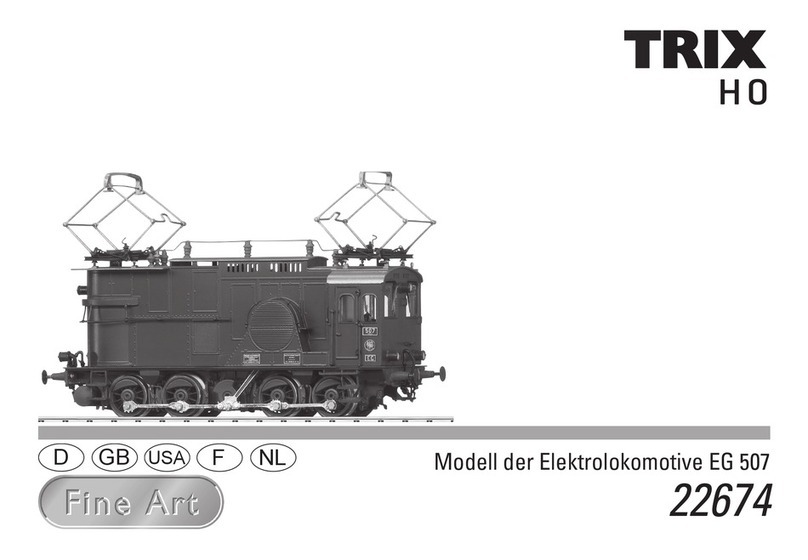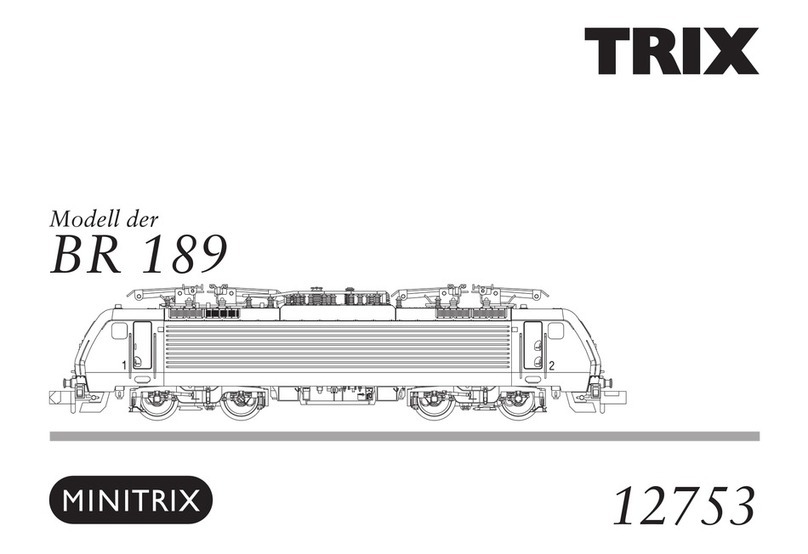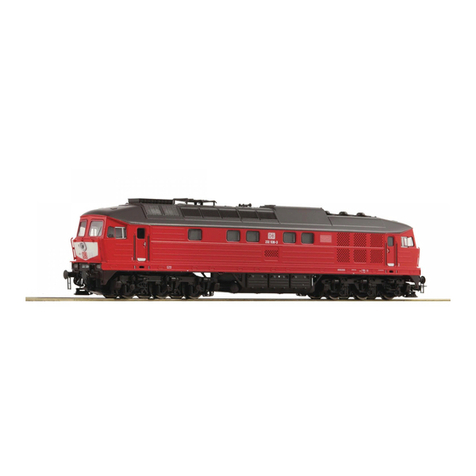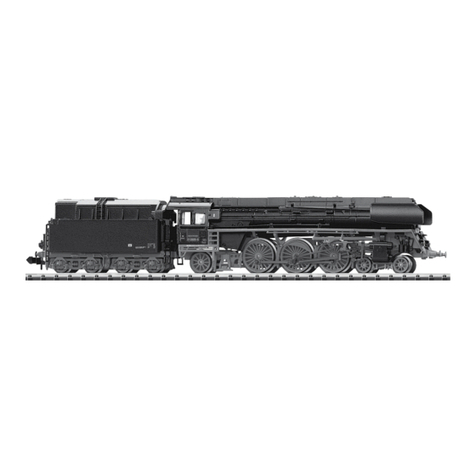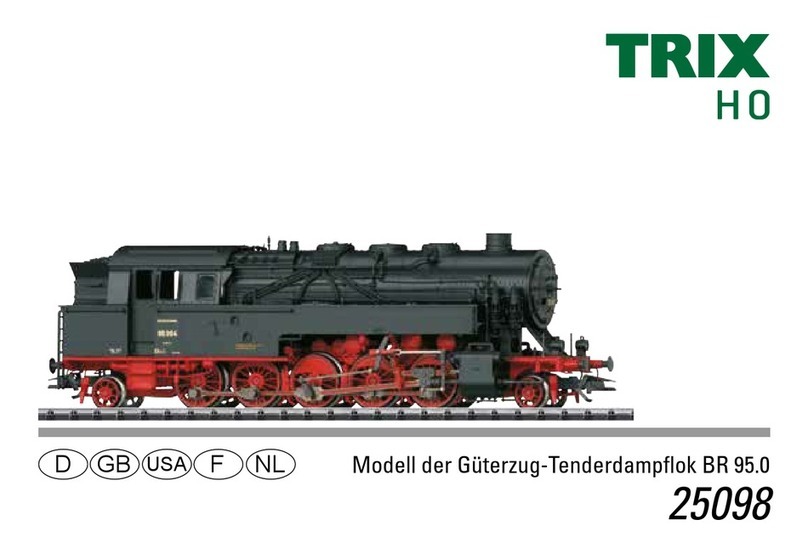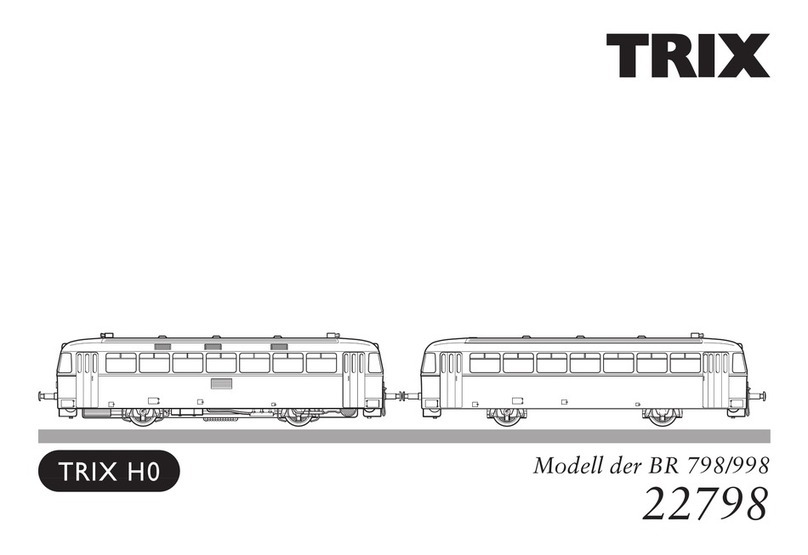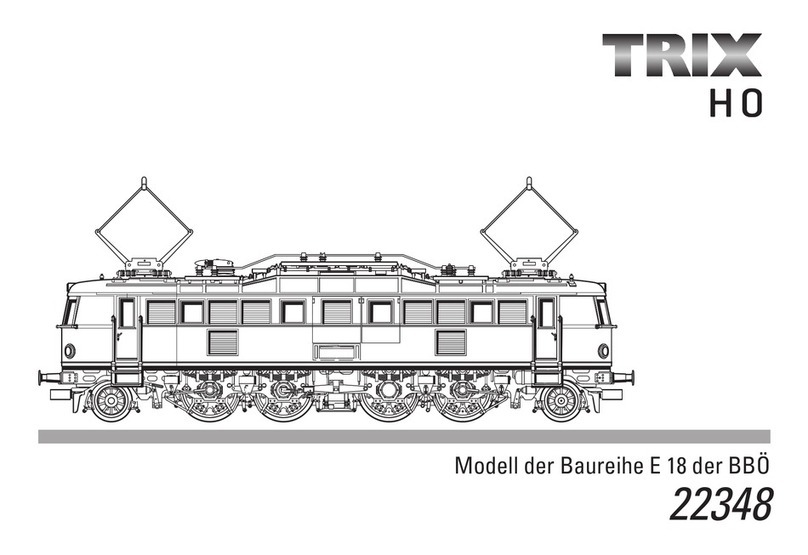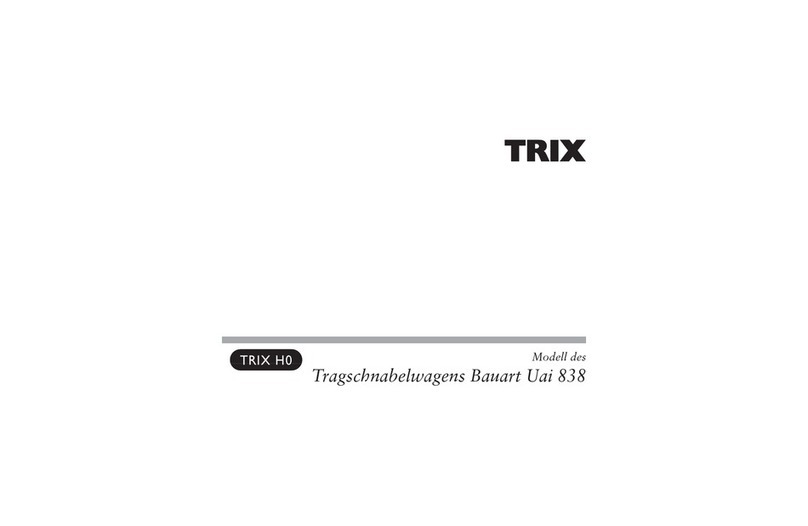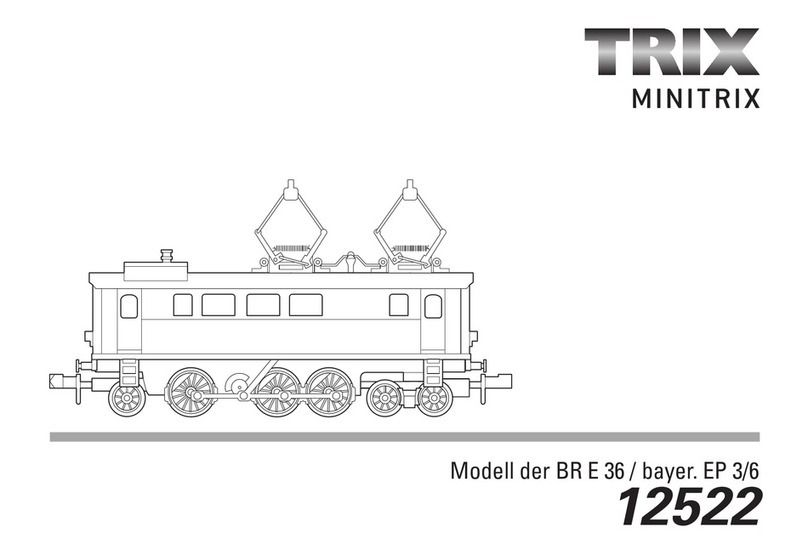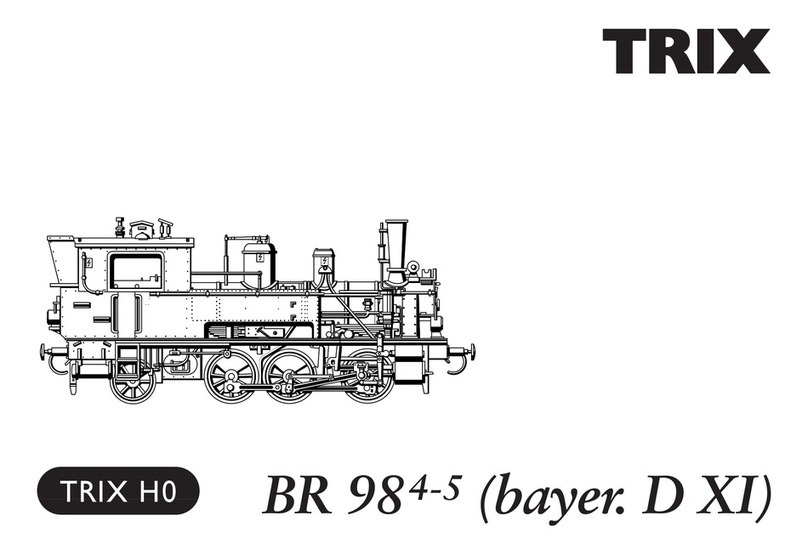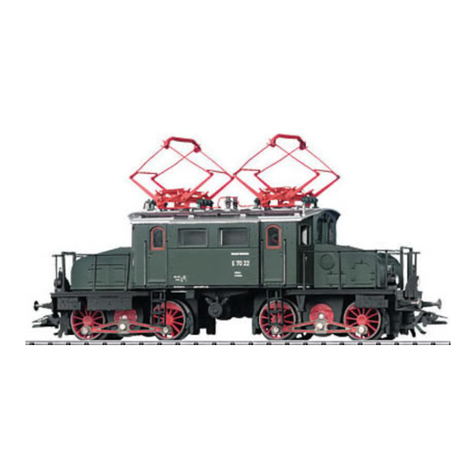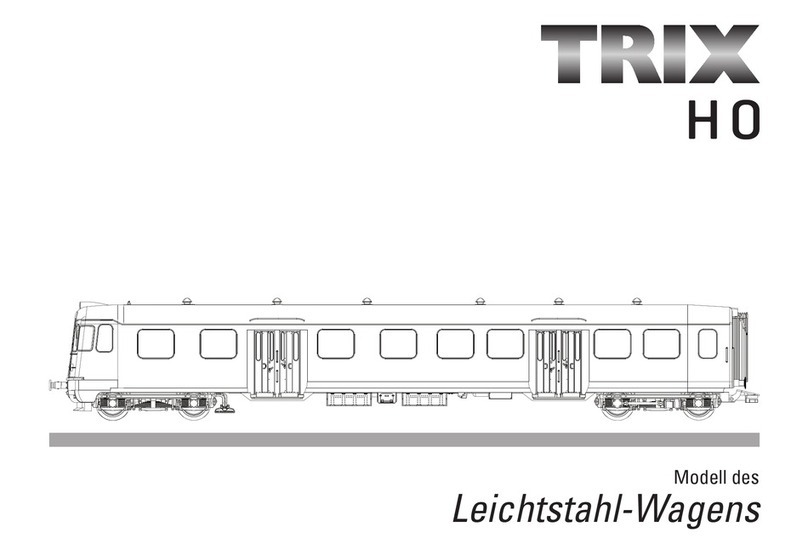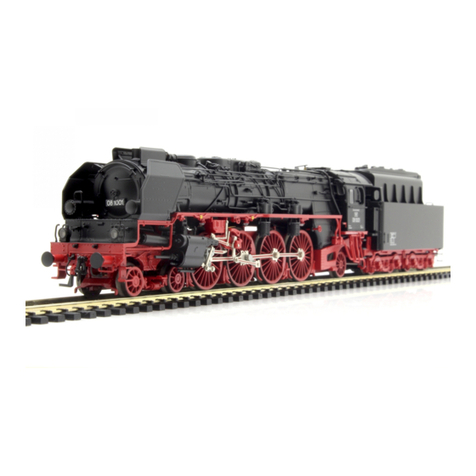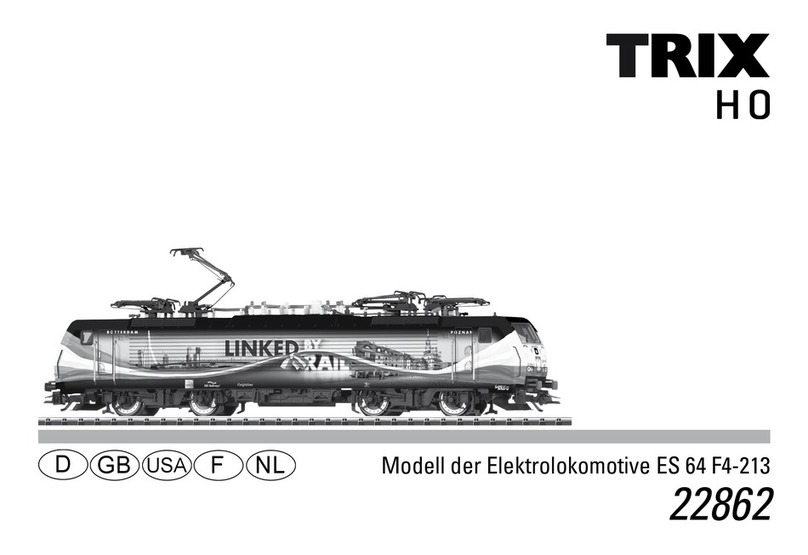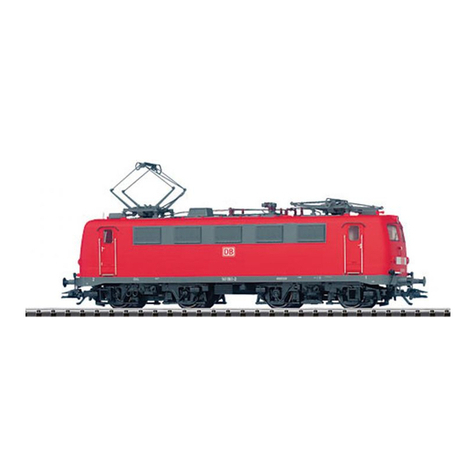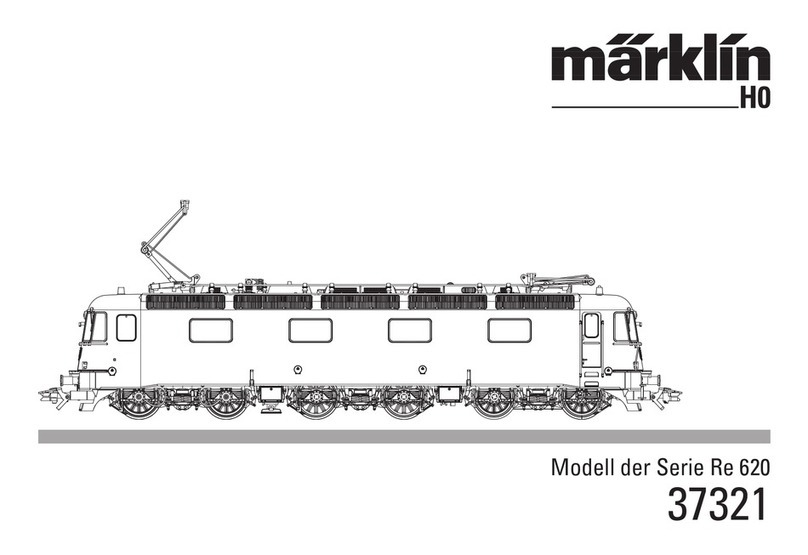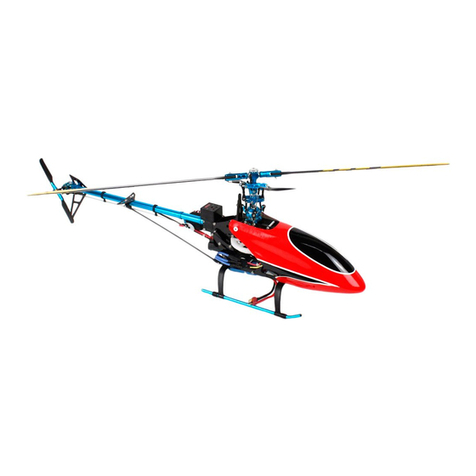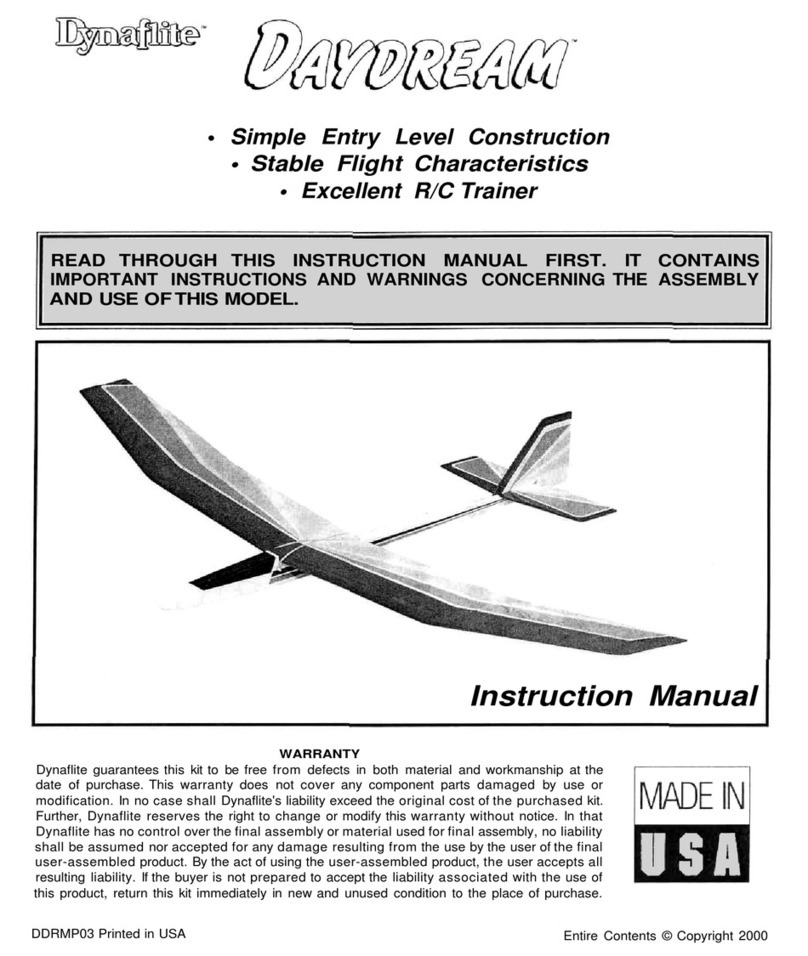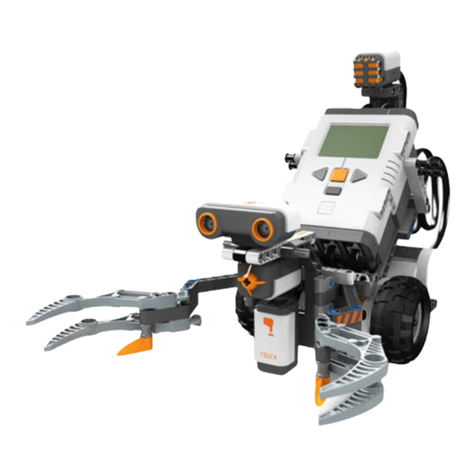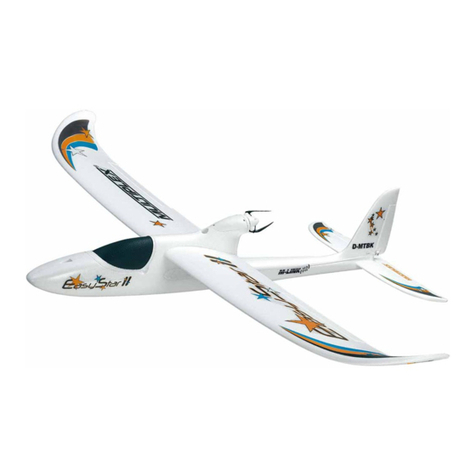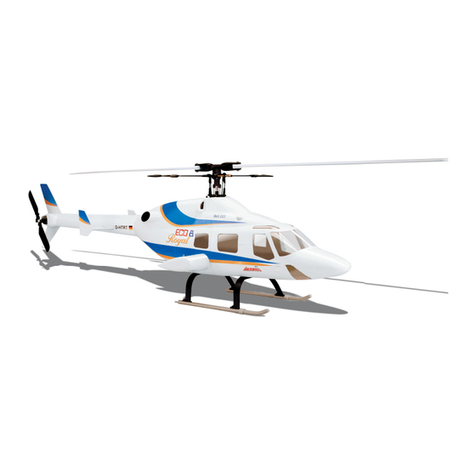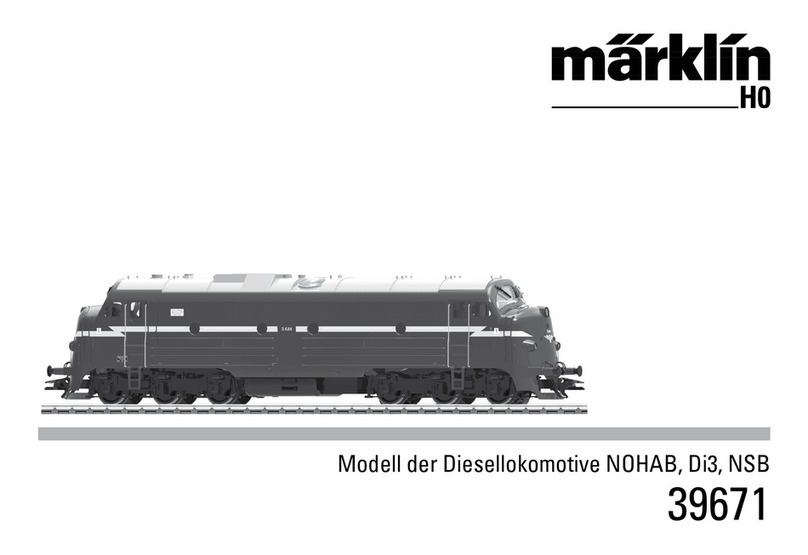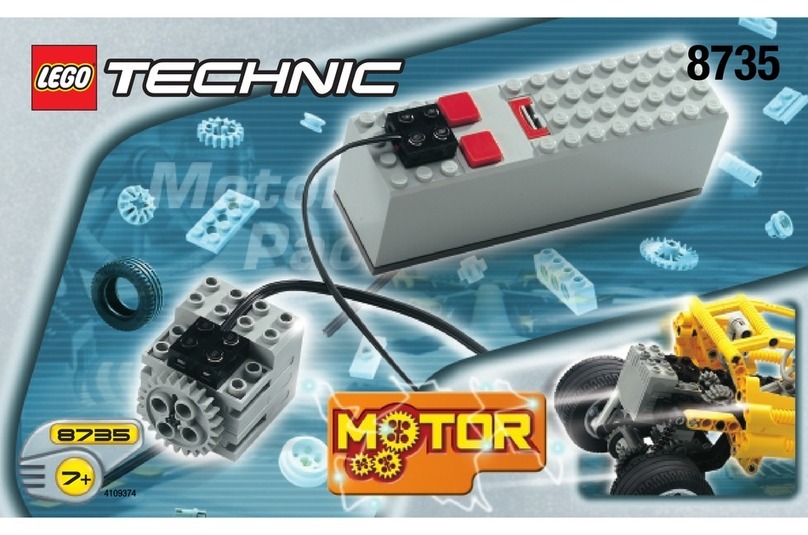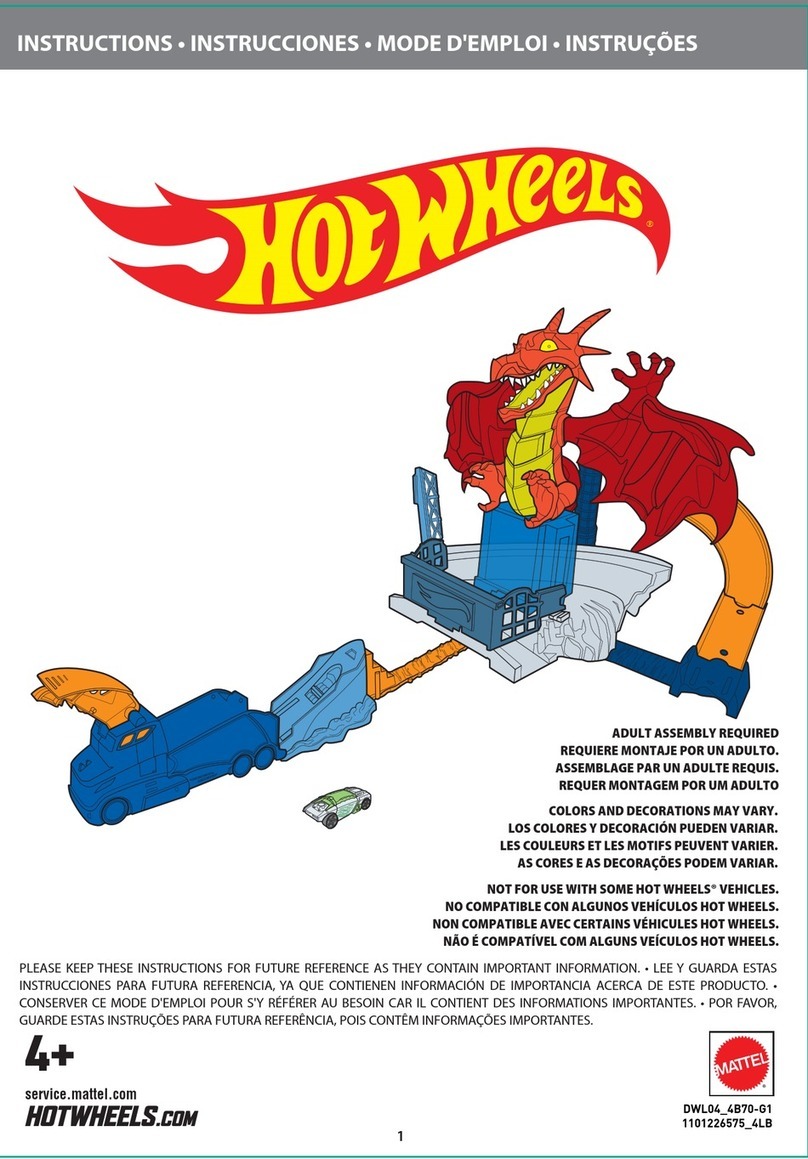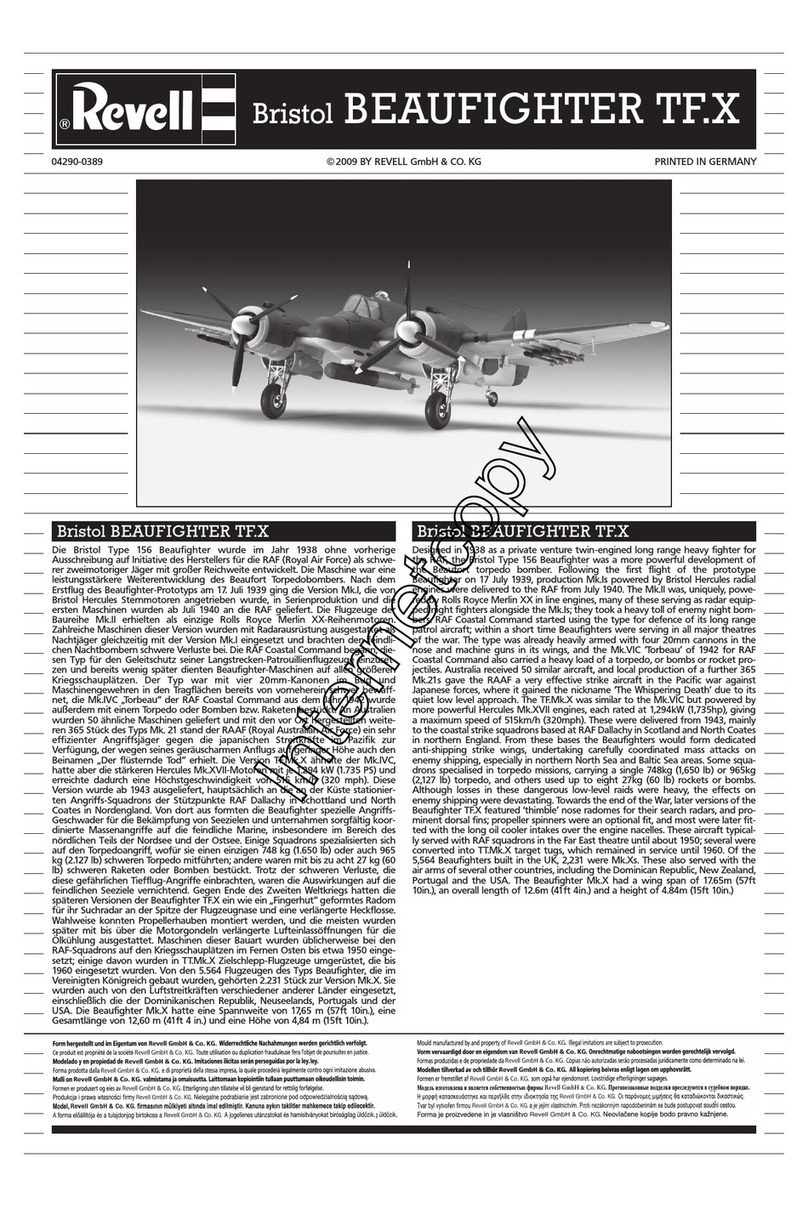3
Informations concernant la locomotive réele
En 1946, les chemins de fer fédéraux suisses (CFF) firent
l’acquisition des premières locomotives de la série
Re 4/4 l. Avec une puissance horaire de 1855 kW et
un poids de 56 t seulement, les machines avaient une
capacité suffisante. La vitesse maximale pouvant être
atteinte était de 125 km/h. Les Re 4/4 étaient essentiel-
lement affectées à la traction des trains rapides légers
(composés de voitures en acier léger), des trains-navettes
et des trains régionaux.
A partir de 1957, les Re 4/4 l firent l’objet de quelques
modifications – le numéro d’immatriculation à 3 chiffres
dans la tranche 400 fut remplacé par un numéro à 5 chiff-
res, de 10001 à 10026. Les portes situées à gauche dans
le sens de marche furent condamnées. Pour une meilleure
aération, les 4 fenêtres situées sur le côté du compar-
timent des machines ainsi que les jalousies (situées en
dessous) furent remplacées par 5 grilles de tuyère. En
1991, les soufflets d’intercirculation furent démontés et
les portes frontales – invisibles de l’extérieur – furent con-
damnées. Il existait également plusieurs livrées différentes
– la livrée de la caisse au départ usine était vert sapin
avec un toit argenté. A partir de 1984, la livrée rouge des
CFF fut appliquée également aux Re 4/4 l.
Vers la fin 1998, les Re 4/4 l furent réformées par les CFF.
Sept unités furent conservées : 3 se trouvent en Allema-
gne, 33 au chemin de fer suisse « Mittelthurgaubahn » et
une – la 10001 – dans le parc de véhicules historiques en
état de marche des CFF.
Informatie van het voorbeeld
De Zwitserse spoorwegen (SBB) schaften in 1946 de eers-
te locomotieven van de serie Re 4/4 I aan. De machines
leverden met een vermogen van 1855 kWh en een gewicht
van slechts 56 t uitstekende prestaties. De maximale snel-
heid bedroeg 125 km/h. De Re 4/4 werden vooral gebruikt
voor lichte sneltreinen (samengesteld uit z.g.n. lichtstalen
rijtuigen), pendeltreinen en regionale treinen.
Vanaf 1957 werden aan de Re 4/4 I enkele wijzigingen
aangebracht - in plaats van het drie-cijferige nummer in
de 400 serie, nu het vijf-cijferige nummer 10001 - 10026.
De in de rijrichting links aangebrachte deuren werden
dichtgemaakt. Voor een betere ventilatie werden aan
de zijde van de machineruimte de vier ruiten en de zich
daaronder bevindende jaloezieën vervangen door acht
roosters. In 1991 werden de vouwbalgen gedemonteerd
en de frontdeuren, van buiten niet zichtbaar, dichtge-
maakt. Er waren tevens meerdere kleurvarianten. Vanaf
de fabriek was de loc opbouw dennengroen geschilderd
met een zilverkleurig dak. Vanaf 1984 onderging ook de
Re 4/4 I het rode kleurschema van de SBB.
Vanaf 1998 werden de Re 4/4 I door de SBB buiten
dienst gesteld. Zeven stuks bleven behouden: 3 zijn er in
Duitsland, 3 bij de Zwitserse Mittelthurgau-Bahn en één
- de 10001 - bevindt zich in het park van de SBB voor
historische, bedrijfsklare voertuigen.

